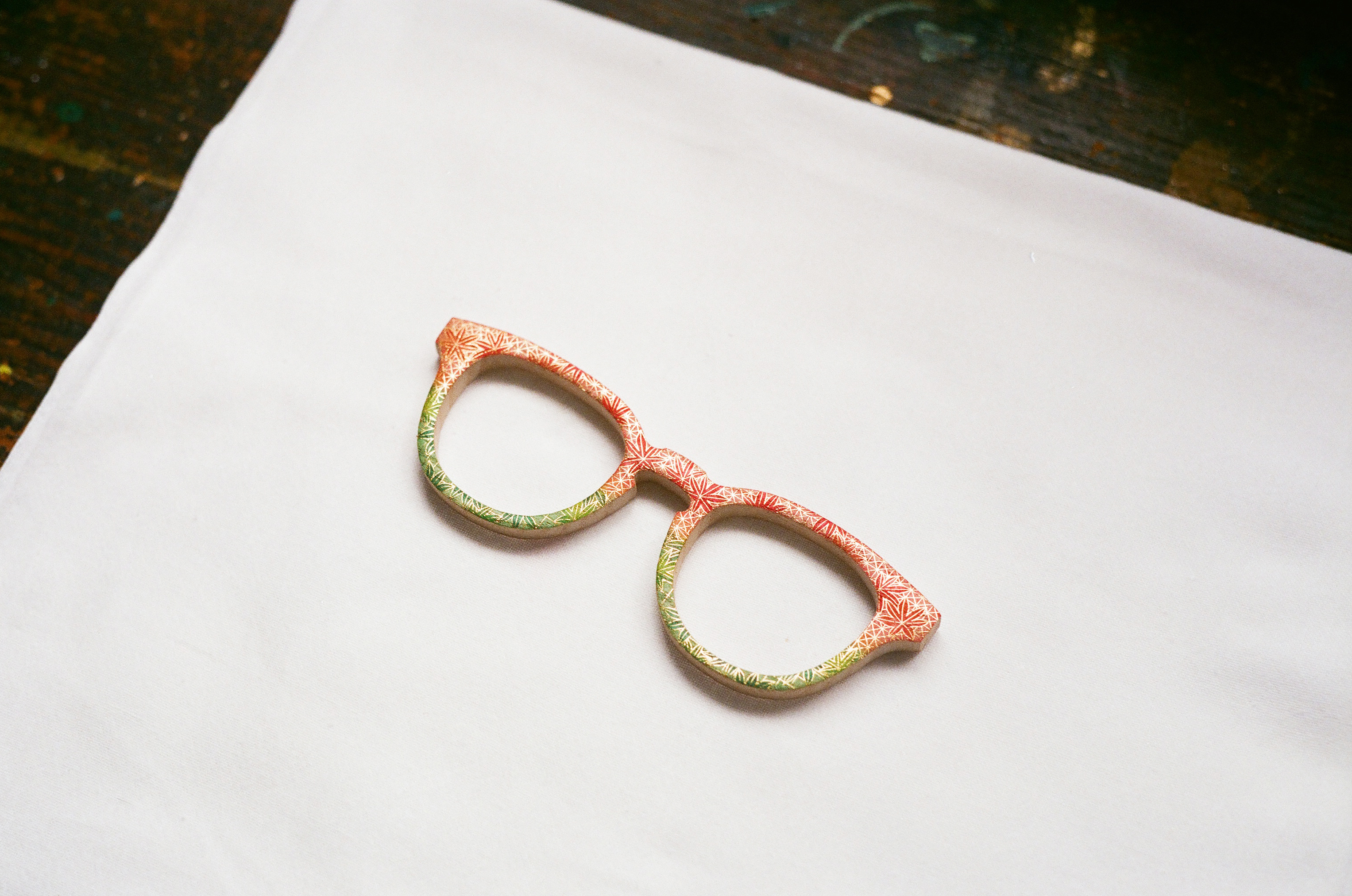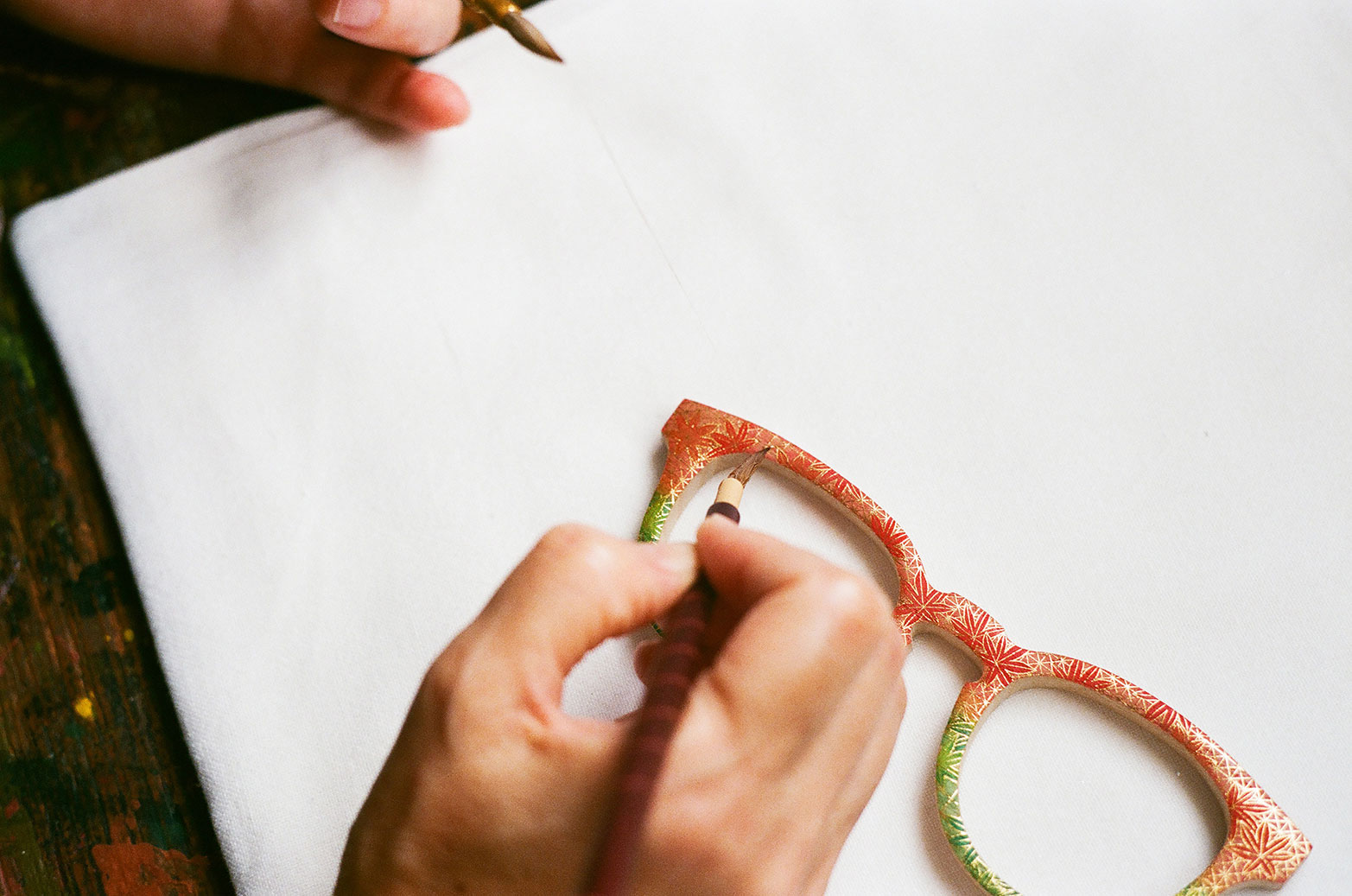
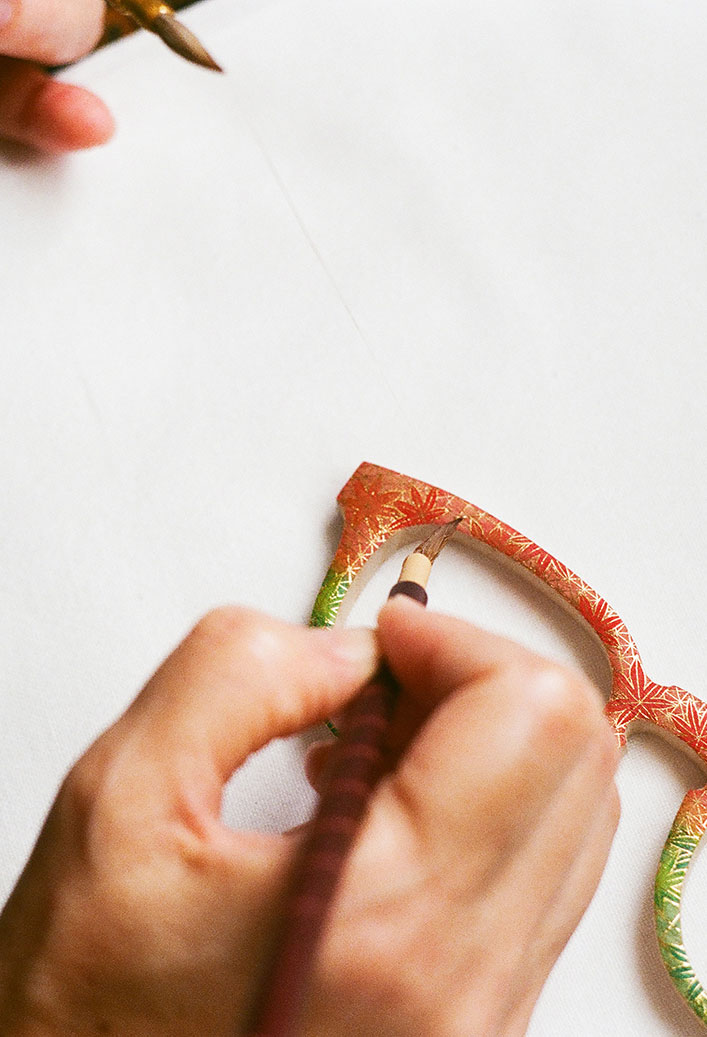
EYEVAN × KYOTO
interview 6
“I have always loved Kirikane”
Otsuka Kasen (Yamashina-ku, Kyoto, Japan)
Not many people are familiar with the craft is called “Kirikane” (Japanese art, decorative technique). When we see the pieces decorated with Kirikane, the beauty and the fineness of the technique take our breath away. Ms. Otsuka started her own business at the age of 25. In addition to being a Kirikane artist, she has applied Kirikane technique to numerous Buddhist statues and crafts. We interviewed Ms. Otsuka, who has fallen in love with the world of Kirikane, about its fascination.
About Kirikane
Kirikane – Cutting and pasting a thin gold leaf
Kirikane literally means “to break off gold.” By using bamboo, cut gold leaf into thin strips and form into lines. Apply a little water to the brush and remove the gold leaf. On the other brush, a mixture of glue called “sanzenbon nikawa” and seaweed called “funori” is used as a glue, and a little is put on the brush and pasted.
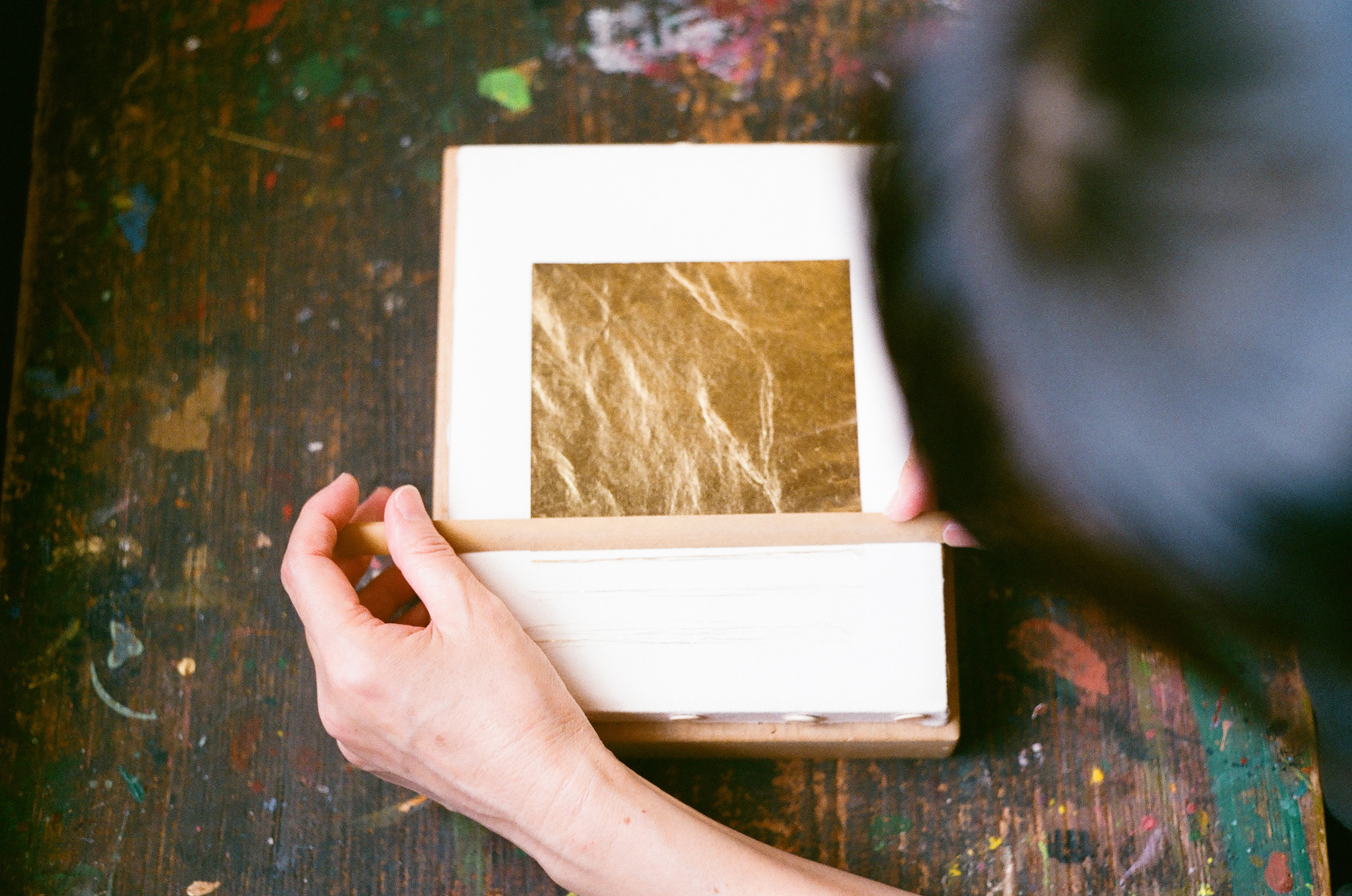
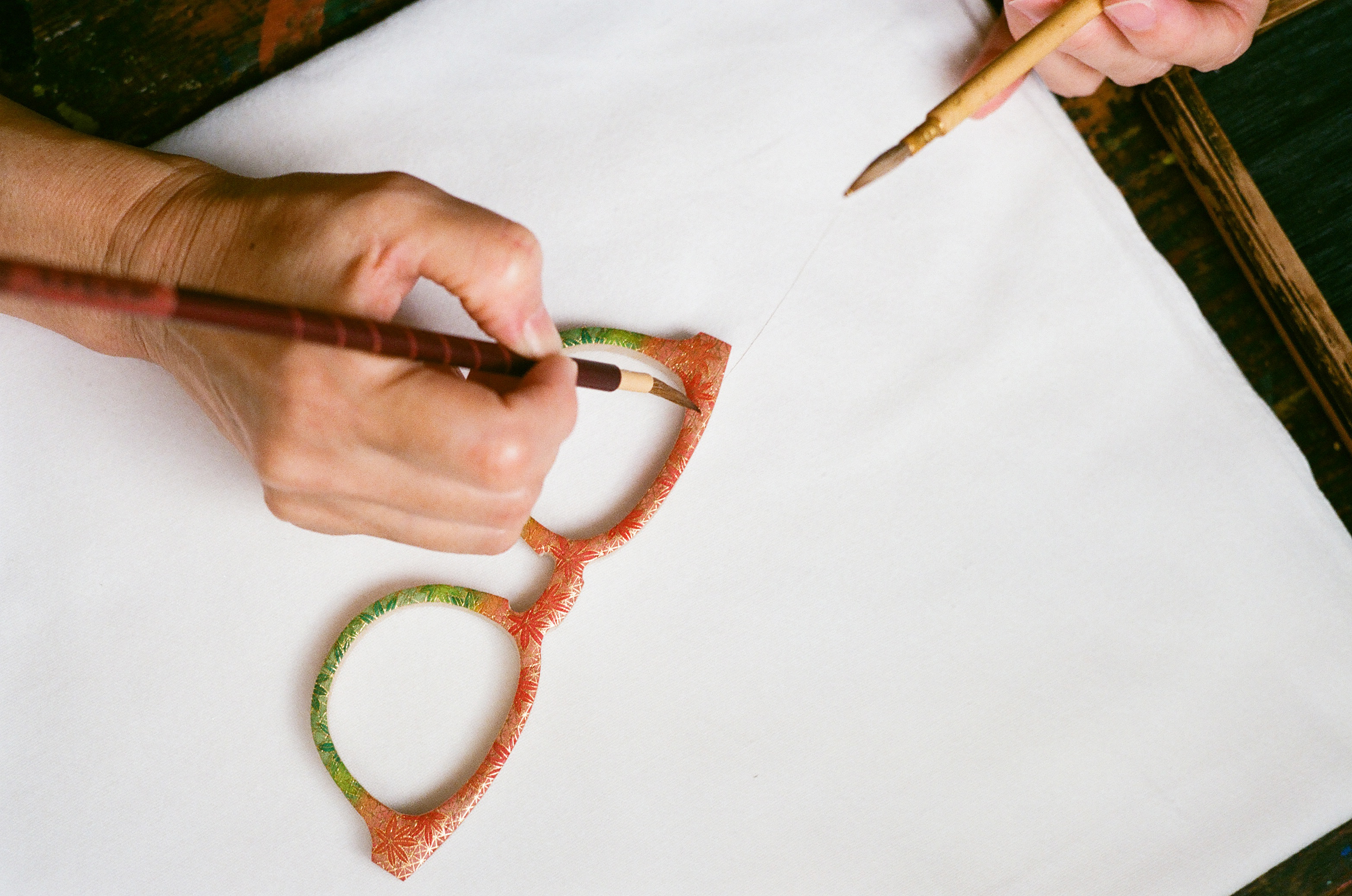
First encounter with Kirikane
Trial and error have brought me to where I am today
My first encounter with Kirikane was at a Buddhist statue sculpture class I started attending when I was in elementary school. After many years, I began to work as a colorist, a person who paints Buddhist statues, and in the process, I came across a work called Kirikane. I learned on my own by getting tools and getting advice from teacher’s friend over the phone. I’ve been doing this on my own, so it takes a very long time for me to come up with my own ideas. But in the meantime, I’ve been trying all kinds of different ways, so I think the answer is getting more and more clear. That is why I think I was able to master Kirikane.
About Succession
Create something that will last
I think there is a demand for Kirikane and there are people who want to learn it, but I am very bad at teaching people. I am concerned about the future of the culture of Buddhist statues. Compared to foreign countries, Japanese people probably do not have much faith. So I wonder how much of the temple itself will remain in the future. However, I think that Kirikane will not only be used for Buddhist statues in temples, but also for various other things, so I think that Kirikane itself will remain in the future. I want to create something that is familiar but will be kept forever.
My values
Do without compromise
I always try not to compromise. For example, when drawing a grid pattern, just by inserting a piece of Kirikane in between, it gives it a very detailed look. If I have to decide whether to increase one of those or not, I’ll increase it. Because it may be one of many that I make, but for the recipient, it’s a precious one.
Meaning of tradition
Never felt like doing the old routine
Since Kirikane wasn’t my family business, I didn’t think of it as a tradition when I started. It’s nothing new, but I still don’t feel like I’m doing something old-fashioned. I think that cutting gold for the Buddha is somewhat a little new. Even though I do the same work every time, I always try to do something new.
